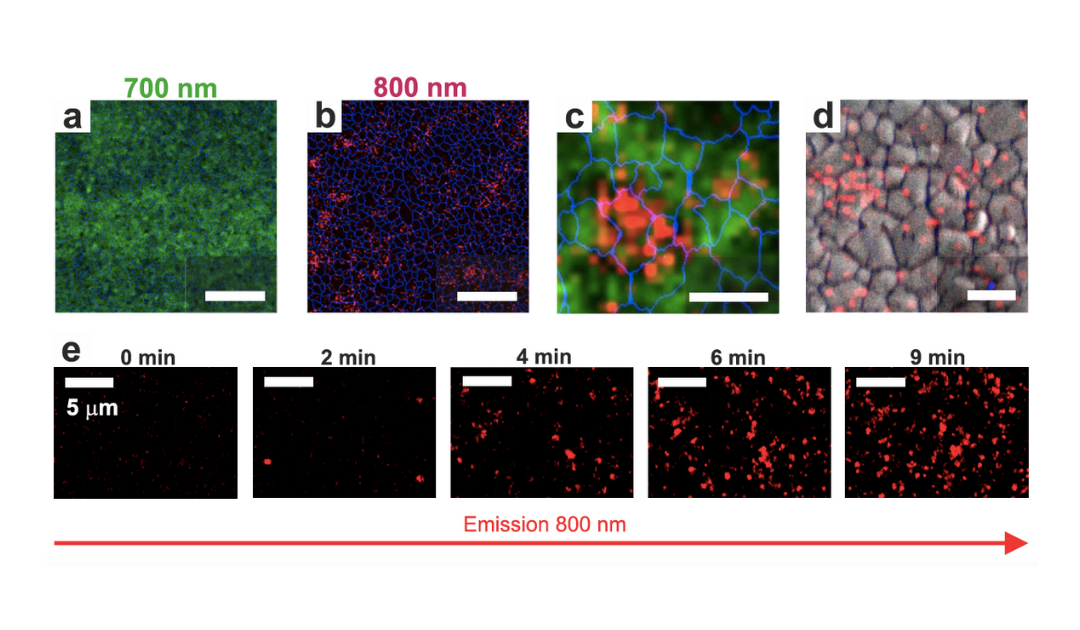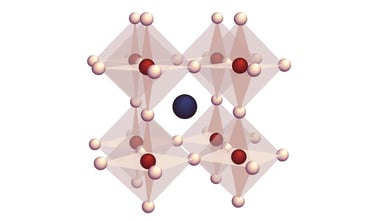Metal halide perovskites are promising materials which can be applied in the field of optoelectronics (in high efficiency single junction, multi-junction solar cells and LEDs). Apart from their exceptional optoelectronic properties, the optical band gap of these materials can be tuned through compositional engineering. However, previous studies have also shown issues such as intrinsic instability under illumination and photo-induced segregation.
In this work, the authors investigate halide segregation in methylammonium-free wide bandgap perovskites using advanced microscopy techniques. The research confirms that phase segregation and charge funneling are essential for achieving high photoluminescence quantum yield (PLQY) (up to 25%) and shows that this may present a route towards more efficient perovskite-based light emitting devices.
In particular, the authors use photoluminescence quantum yield (PLQY) measurements in combination with scanning electron microscopy (SEM) and cathodoluminescence (CL) mapping to quantify the impact of photo-induced halide segregation on the macroscopic and microscopic PL properties. SEM and CL mapping show that increasing the Br content accelerates the phase segregation process and significantly increases the PLQY up to 25%. The authors also demonstrate that this new emission originates from small domains, located at the surface and grain boundaries.
The authors conclude that the formation of nano-emitting low-energy domains embedded in a wide bandgap matrix enables a higher PLQY for light emission at low energies, otherwise not achievable in non-segregated perovskites with the same nominal bandgap. Their study shows that the high efficiency of carrier funneling combined with weak re-absorption of low-energy photons enables high emission efficiencies, and it could potentially be used as thermally stable efficient color conversion devices, LEDs, or lasers.
Image: (a,b) Top surface CL intensity map (c) High-magnification CL intensity map of the same sample (d) Superposition of the SEM image and the CL intensity map (e) Different time frames from our video recording of the CL intensity.
Image source: Nano-emitting Heterostructures Violate Optical Reciprocity and Enable Efficient Photoluminescence in Halide-Segregated Methylammonium-Free Wide Bandgap Perovskites P. Caprioglio, S. Caicedo-Dávila, T. Chien-Jen Yang, C. M. Wolff, F. Peña-Camargo, P. Fiala, B. Rech, C. Ballif, D. Abou-Ras, M. Stolterfoht, S. Albrecht, Q. Jeangros, and D. Neher, ACS Energy Lett. 6 (2021)
.png)








